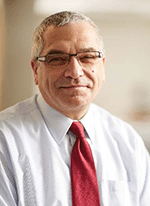Non-Pharmacological Back Pain Management: Collaborative Solutions

Below, Dr. Delitto answers a few questions for ACA Blogs about his upcoming
ICSC presentation:
Why is your topic important for today’s healthcare provider?
We are all obligated to treat patients more efficiently. Right now, musculoskeletal care is far too costly to manage. This is an area where we are performing a lot of procedures on patients that many might consider premature or unnecessary in our present healthcare system. Despite the known benefits of early conservative care, almost ½ of all low back pain patients are never be seen by a chiropractor or physical therapist. Additionally, there are questionable rates of surgery and questionable rates of other procedures performed that may carry heightened risks. These potentially questionable procedures are often taking place without the benefit of a non-surgical, non-pharmacological trial. We need to find ways to ensure that patients have access to non-pharmacological and non-surgical interventions and that an attempt is at least made at these methods, first.
Why is this topic important to you personally?
All my life, I’ve been interested in looking at various interventions and their effectiveness for common musculoskeletal conditions such as back pain. Throughout my career, I’ve had the opportunity to lead teams of researchers and have been part of collaborative efforts where successful trials were conducted, illustrating the effectiveness of non-surgical or non-pharmacological methods of treating patients. However, I’ve been personally frustrated with the challenge of implementing these strategies. One method would be to promote direct access to these kinds of providers.
What about your presentation topic may surprise people?
Given the historical division among these professions, having physical therapists, osteopaths and chiropractors in one room is surprising, alone! I stress collaboration as opposed to competition among the disciplines. Having different professions in the same room is a step forward in this collaborative approach. I’d like to see this same level of collaboration in the trenches; while we are seeing it at high levels with our respective membership organizations and relevant coalitions, it’s important to have people on the ground subscribing to this collaborative philosophy to make a lasting, significant impact in the healthcare system.
How can knowing more about your presentation topic help healthcare providers more effectively treat patients?
We need to think about non-pharma and non-surgical providers as a network of people. We need to find ways to work together to bring these interventions to the public. The biggest problem I see right now is access. Patients have difficulty accessing services. Sometimes this is driven by payers. Patients should be making informed choices. We should educate the public about the various approaches and let them decide – there are plenty of patients to go around!
Are there any new developments that make your presentation at ICSC especially relevant or timely?
In the payer world, we’re starting to see some real movement in the payers reducing barriers to care by addressing the co-payment issue. For example, United Healthcare has made efforts to either eliminate or substantially reduce the co-payment for PT and chiropractic care. This is being written into contracts in commercial products right now. This includes payment for PT and chiropractic services for high-deductible plans. Payers are implementing these strategies because it makes sense financially – it reduces their costs to have PTs and chiropractors treat these patients, first.
ICSC will bring together researchers and practitioners of the chiropractic, physical therapy and osteopathic professions to initiative a dialogue on the use of manual therapies and non-pharmacological approaches for the management of pain. The event aims to help participants identify opportunities for interprofessional research and collaboration, raise awareness among the professions, and develop interprofessional care pathways. To learn more, including hotel and registration information, click here.
